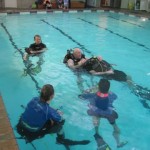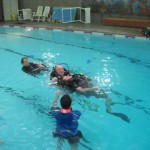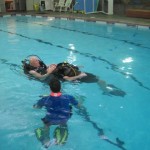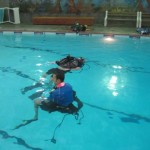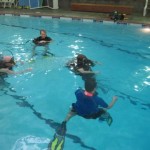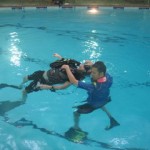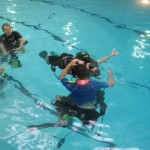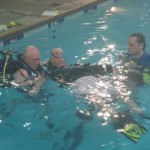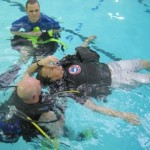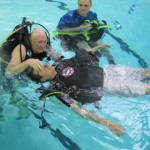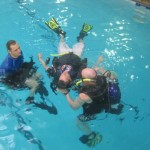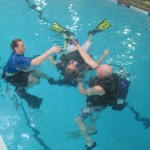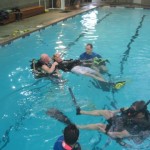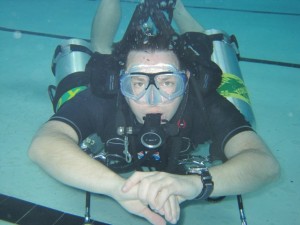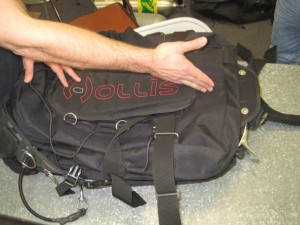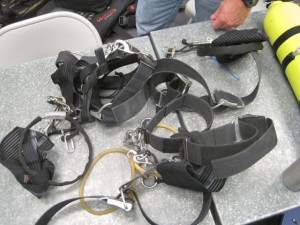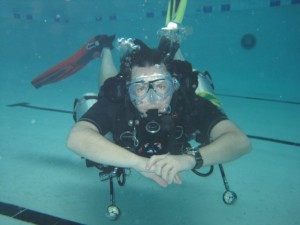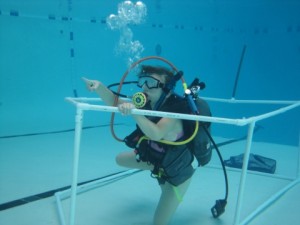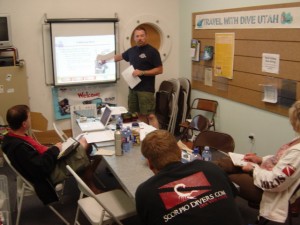Category Archives: Blog
IDC 2013–Day 1
Today, we started the first PADI Instructor Development Course (IDC) of 2013 at Dive Utah. So far, it’s shaping up to be an interesting program. Two instructor candidates and one IDC Staff Instructor candidate, all with professional educator backgrounds. We’ll also be merging some existing PADI Assistant Instructor candidates into the program.

Today, we started with the orientation presentation followed by Dive Theory exams. Dive Theory, encompassing Physics, Physiology, Equipment, Recreational Dive Planner & Dive Planning and Dive Skills and the Environment, can be a bit of a hurdle for some candidates. PADI’s Dive Theory Online is a great way to prepare. Some other tools include old (pre-2009) Divemaster Exams (find an Instructor that kept the materials, like me), Diving Knowledge Workbook from PADI and the PADI Encyclopedia of Recreational Diving. The Encyclopedia is just that, an encyclopedia. It’s an excellent reference text, but perhaps not the best teaching text. You need to use the Diving Knowledge Workbook with the Encyclopedia.
We wrapped up today reviewing the Dive Theory exams and talking about tomorrow. Tomorrow holds General Standards & Procedures (perhaps with “Fabulous Prizes”), Developing Knowledge Development Presentations, candidates actually delivering presentations and, one of my favorites, a Project AWARE Workshop. We’ll spend time looking at Project AWARE and how important it is to diving professionals. The ocean is my office…don’t make a mess in it!
Time to start working on paperwork…a Course Director’s job is never done. 😉
Happy Diving!
Sidemount Scuba
2012 has been an interesting year for me. I completed EMT and Advanced EMT training, both to earn Utah credentials and to help maintain my Diver Medical Technician (DMT) certification. To end the year, though, I’ve started something new: PADI Sidemount scuba training.
Sidemount Scuba uses an equipment setup that was formerly reserved for Tec diving. Unlike traditional open-circuit scuba, with a tank mounted on your back, Sidemount keeps tanks streamlined along the sides of your body. This provides many benefits to the diver: better streamlining, better weight distribution, redundancy in gas supply and additional flexibility for your back. It takes a bit to get used to and it’s very gear-intensive, but sidemount has the possibility to open up scuba to divers that couldn’t otherwise tolerate a tank on their backs.
Let’s take a look at some of the differences in equipment setup. First the BCD has some features to allow mounting the tanks.
Then, you need rigging to attach the tanks to the BCD.
The tanks are rigged top and bottom with clips to attach to the BCD. Then there are bungees on the BCD to tighten and streamline the arrangement. Each tank has it’s own first stage. The left side has a shorter hose to the second stage and the primary inflator for the BCD. The right hose has a longer hose to facilitate air-sharing if your buddy runs out of air. To streamline and retain the longer hose (5-7 feet long), elastic bands are on the right tank to retain the hose. These can either be something a simple as some surgical tubing or brand-name elastic take bands. Each first stage also has an SPG (submersible pressure gauge) to monitor breathing gas. The SPG’s are on short hoses and they’re usually positioned so their within easy site while diving.
When diving with a pair of 80cf aluminum tanks, you’ve twice as much breathing gas as diving with a single tank. Alternatively, you can dive with two smaller tanks to provide the same amount of breathing gas. Either way, you’ve completely redundant tanks, first stages, SPG’s, and second stages. I’m looking forward to completing my initial Sidemount open water dives.
During the same trip to Dive Utah’s pool and while we had the sidemount gear all set up, we also completed the intro to Tec pool session. We repeated some of the same drills we completed for the Sidemount pool session, such as air sharing, hovering, etc. Added into this was doing a NOTOX breathing gas switch and putting up a lift bag.
All-in-all, starting both PADI Sidemount (recreational) and the DSAT TecRec programs has been a lot of fun. Always a good reminder that even after having a lot of training, taking additional training can always make you a better diver.
Safe Diving
–jon
UPDATE: I’m now a PADI Sidemount Specialty Instructor and Instructor Trainer. I’ve logged a lot of Sidemount dives since taking the course. If you’re ready to try a new gear configuration, contact me to take the PADI Sidemount Specialty.
2012 recap & SCUBA plans for 2013
November has ended with something special. Twenty-two years ago, on the weekend following Thanksgiving, I certified as a PADI Open Water Diver at Blue Lake, Utah. This past weekend I had the pleasure of certifying my 10 year-old daughter, Kona Rusho, as a PADI Open Water Diver.
It’s taken us a good amount of time to get here. We started two years ago with the PADI Bubblemaker program and then the PADI Seal Team. We’ve had a few pool scuba sessions since then. Then, this summer we started back in with the academics and more pool sessions. I found that as an instructor, it can be really hard to teach family. I also found that there are a lot of games I’ve used in Bubblemaker and Seal Team sessions that make a PADI Open Water Diver course a lot more fun–for my students and for me. Kona didn’t just stop at Open Water Diver, though. Since we were diving at the Crater in Midway, Utah, we were diving at altitude. So, we added one more dive and she is now a PADI Altitude Diver as well. Congrats, Kona!
Looking forward, what’s next? I’m hoping to complete a PADI Sidemount scuba course in the next couple of weeks with Chris Langehaug. Chris has come a long way in the last two years. When we first met, he was just looking for the next step as a recreational diver. Before the end of that year, he was a PADI Open Water Scuba Instructor, Master Scuba Diver Trainer and an IDC Staff Instructor. Now he’s the Director of Tec diving at Dive Utah, where we both teach. Chris will probably also be helping with the next PADI Instructor Development Course at Dive Utah.
The next PADI Instructor Development Course (IDC) will be January 3-11, 2013 at Dive Utah (Holladay). It’s shaping up to be a great program. Chris Langehaug will be conducting a Sidemount orientation, I’m adding a PADI Kids workshop and we’ll have the usual extras: Project AWARE workshop, Business of Diving, PADI Emergency Oxygen Instructor course, etc. At the end of the week, we’ll also have an Emergency First Response Instructor course. All of this to prepare our candidates for the PADI Instructor Exam on January 12 & 13 at the Crater & Homestead Resort to become PADI Open Water Scuba Instructors.
Feel free to contact me if you’ve any questions about scuba diving, becoming a scuba instructor or cpr/first aid instructor, teaching, etc. To see more about upcoming courses, click on the Go Pro Schedule.
Safe Diving!
–jon
